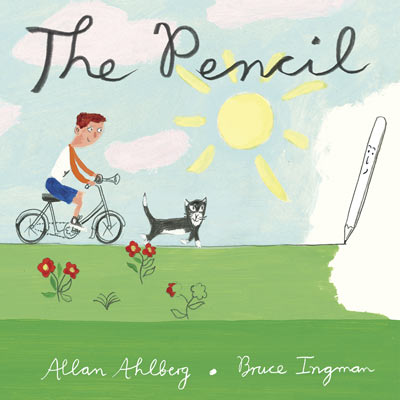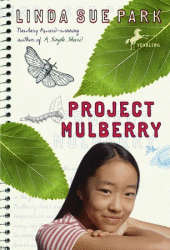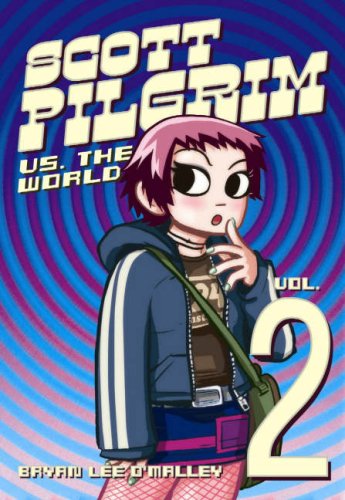Since “Metafiction for Children: A User’s Guide” went up yesterday (as the final entry on In Media Res’ “Children’s Culture” week), I’ve been pleased by people’s kind response to my amateur video. Thanks, everyone!
There are far more books than I could include in the film, and there were several I had not thought of. So, I thought I’d expand the field of inquiry here with a more complete bibliography of metafictional works for young readers.
First, the titles included in the film clip:
- Lane Smith, It’s a Book (2010)
- Art Spiegelman, Open Me… I’m a Dog! (1997)
- Winsor McCay, Little Nemo In Slumberland of May 2, 1909. From The Best of Little Nemo in Slumberland (1997), edited and with an introduction by Richard Marschall, and including appreciations by Maurice Sendak, Ron Goulart, Art Spiegelman, Charles M. Schulz, Chuck Jones, and Bill Watterson.
- Miguel de Cervantes, Don Quixote (Part 1, 1605; Part 2, 1615). Not a children’s book. Obviously.
- Dav Pilkey, Captain Underpants and the Invasion of the Incredibly Naughty Cafeteria Ladies from Outer Space (1999). The two-page spread is from this book.
- Dav Pilkey, the above title, and: The Adventures of Captain Underpants (1997), Captain Underpants and the Attack of the Talking Toilets (1999), Captain Underpants and the Perilous Plot of Professor Poopypants (2000).
- Jon Scieszka and Lane Smith, The Stinky Cheese Man and Other Fairly Stupid Tales (1992)
- Walter Dean Myers, Monster (1999)
- David Macaulay, Black and White (1990)
- Ann Jonas, Round Trip (1983)
- D.W. Johnson, Palazzo Inverso (2010)
- Amy Krouse Rosenthal and Tom Lichtenheld, Duck! Rabbit! (2009)
- Charley Bowers, The Bowers Mother Goose Movie Book (1923)
- David A. Carter, One Red Dot (2004)
- Peter Newell, Topys & Turvys (1902)
- David Wiesner, The Three Pigs (2001)
- Crockett Johnson, Harold and the Purple Crayon (1955)
Over on In Media Res, I list the titles behind me:
- Jon Agee’s The Incredible Painting of Felix Clousseau (1988)
- Barbara Lehman’s The Red Book (2004)
- Roderick Townley’s The Great Good Thing (2001)
- Johnson’s A Picture for Harold’s Room (1960)
- Jason Shiga’s Meanwhile (2010)
- Deborah Freedman’s Scribble (2007)
- Laurie Keller’s The Scrambled States of America (1998)
And there are even a few back there that you can’t see (because my body blocks them from the shot):
- Donald Barthelme, The Slightly Irregular Fire Engine (1971)
- Jon Scieszka and Lane Smith, The True Story of the Three Little Pigs by A. Wolf (1989)
More picture books:
 Allan Ahlberg, The Bravest Bear Ever (2000)
Allan Ahlberg, The Bravest Bear Ever (2000)- Allan Ahlberg and Bruce Ingman. The Pencil (2008)
- Janet and Allen Ahlberg, The Jolly Postman (1986)
- Anthony Browne, Bear Hunt (1979)
- Remy Charlip and Jerry Joyner, Thirteen (1975)
- Nicole Claveloux, Go, Go, Go, Grabote! (1973)
- Michael Garland, Miss Smith’s Incredible Storybook (2003) and sequels
- Mordicai Gerstein, A Book (2009)
- Shirley Glaser, The Alphazeds. Pictures by Milton Glaser (2003)
- Emily Gravett, Wolves (2005)
- Emily Gravett, Little Mouse’s Big Book of Fears (2007)
- Deborah Hopkinson and John Hendrix, Abe Lincoln Crosses a Creek: A Tall, Thin Tale (2008)
- Roberto Innocenti and J. Patrick Lewis, The Last Resort (2002)
- Tove Jansson, The Book About Moomin, Mymble and Little My (1952; English, 1996)
- Crockett Johnson, the Harold series (1955-1963)
- Barbara Kanninen, A Story with Pictures (2007)
- Julius Lester, Ackamarackus. Illustrated by Emilie Chollat (2001)
- Mike Lester, A Is for Salad (2000)
- Patrick McDonnell, Art (2006)
- Richard McGuire, What’s Wrong with This Book? (1996)
- Peter Newell, The Hole Book (1908), The Slant Book (1910), and The Rocket Book (1912)
- Margie Palatini, Piggie Pie. Illustrated by Howard Fine (1995)
- Terry Pratchett, Where’s My Cow? Illustrated by Melvyn Grant (2005)
- Jon Scieszka and Steve Johnson, The Frog Prince Continued (1991)
- Shel Silverstein, Uncle Shelby’s ABZ Book (1961)
- William Steig, Yellow & Pink (1984)
- Jon Stone and Mike Smollin, The Monster at the End of This Book (1971)
- Chris Van Allsburg, The Mysteries of Harris Burdick (1984)
- Chris Van Allsburg, Bad Day at Riverbend (1995)
- Mo Willems, We Are in a Book! (2010)
More chapter books:
- Janet and Allan Ahlberg, It Was a Dark and Stormy Night (1993)
- Mary Amato, Please Write in This Book. Illustrated by Eric Brace (2006)
- Avi, Nothing But the Truth (1991)
- Suzanne Collins, The Hunger Games trilogy (2008-2010)
- Clement Freud, Grimble (1968)
- Cornelia Funke, Inkheart (2003), Inkspell (2005), and Inkdeath (2008)
 Lois Lowry, The Willoughbys (2008)
Lois Lowry, The Willoughbys (2008)- Geraldine McCaughrean, A Pack of Lies: Twelve Stories in One (1988)
- E. Nesbit, The Story of the Treasure-Seekers (1899)
- E. Nesbit, “The Town in the Library, in the Town in the Library” in Nine Unlikely Tales for Children (1901)
- Terry Pratchett, The Amazing Maurice and His Educated Rodents (2001)
- Linda Sue Park, Project Mulberry (2005)
- Lemony Snicket, A Series of Unfortunate Events (1999-2006)
- Scott Westerfield, Extras (2009)
- The Choose Your Own Adventure books (1979-1998)
More Comics: George Herriman’s Krazy Kat, G. B. Trudeau’s Doonesbury, Bill Watterson’s Calvin & Hobbes, Berke Breathed’s Bloom County.
Some Graphic Novels:
 Lynda Barry, 100 Demons (2002)
Lynda Barry, 100 Demons (2002)- Daniel Clowes, Ice Haven (2005)
- Alan Moore and Dave Gibbons, Watchmen (1987)
- Bryan Lee O’Malley, the Scott Pilgrim series (2004-2010)
- Brian Selznick, The Invention of Hugo Cabret (2007)
- Art Spiegelman, Maus (1986 & 1991)
- Chris Ware, Jimmy Corrigan (2000)
- Gene Luen Yang, American Born Chinese (2006)
Thanks to the child_lit community (especially Tracy Barrett, Pat Bartoshesky, Lyn Miller-Lachmann, Sarah Blake Johnson, Deborah Hopkinson, Kate Wooddell), Deborah Freedman (via Twitter), and to Eric Carpenter (via In Media Res) for their suggestions.
And, of course, this list is incomplete! Please add your own favorites in the comments section, below.

Monica Edinger
Pingback: Mix-ups, Mash-ups, Pop Culture, and Scholars « educating alice
Pingback: Tweets that mention More Metafiction for Children -- Topsy.com
Kay Weisman
Deborah Freedman
Tina Hanlon
Elissa
Pat Bartoshesky
Adam Gidwitz
Diane
Pingback: Metafiction for children | CMIS Evaluation Fiction Focus
Poushali Bhadury
Debbie Reese
Philip Nel
Poushali Bhadury
Ariel Zeitlin Cooke
Genevieve
Louise
Pingback: The Purple Crayon’s Legacy, Part I: Comics & Cartoons
Clementine B
Clementine B
Kaethe
Pingback: metafiction for children: a user’s guide « word and image
Pingback: Metafictional Tidbits No. 1 | dallasws
Pingback: Metafiction + Picture books | Eliot's Journal
Pingback: The Limits of Language: Seuss Beyond Zebra – Ronald B Richardson
Pingback: A Nightmare Reading of Harold and the Purple Crayon – Ronald B Richardson
Pingback: A Nightmare Reading of Harold and the Purple Crayon | Ronald B. Richardson
Pingback: What Is Metafiction, Anyway? - Slap Happy Larry